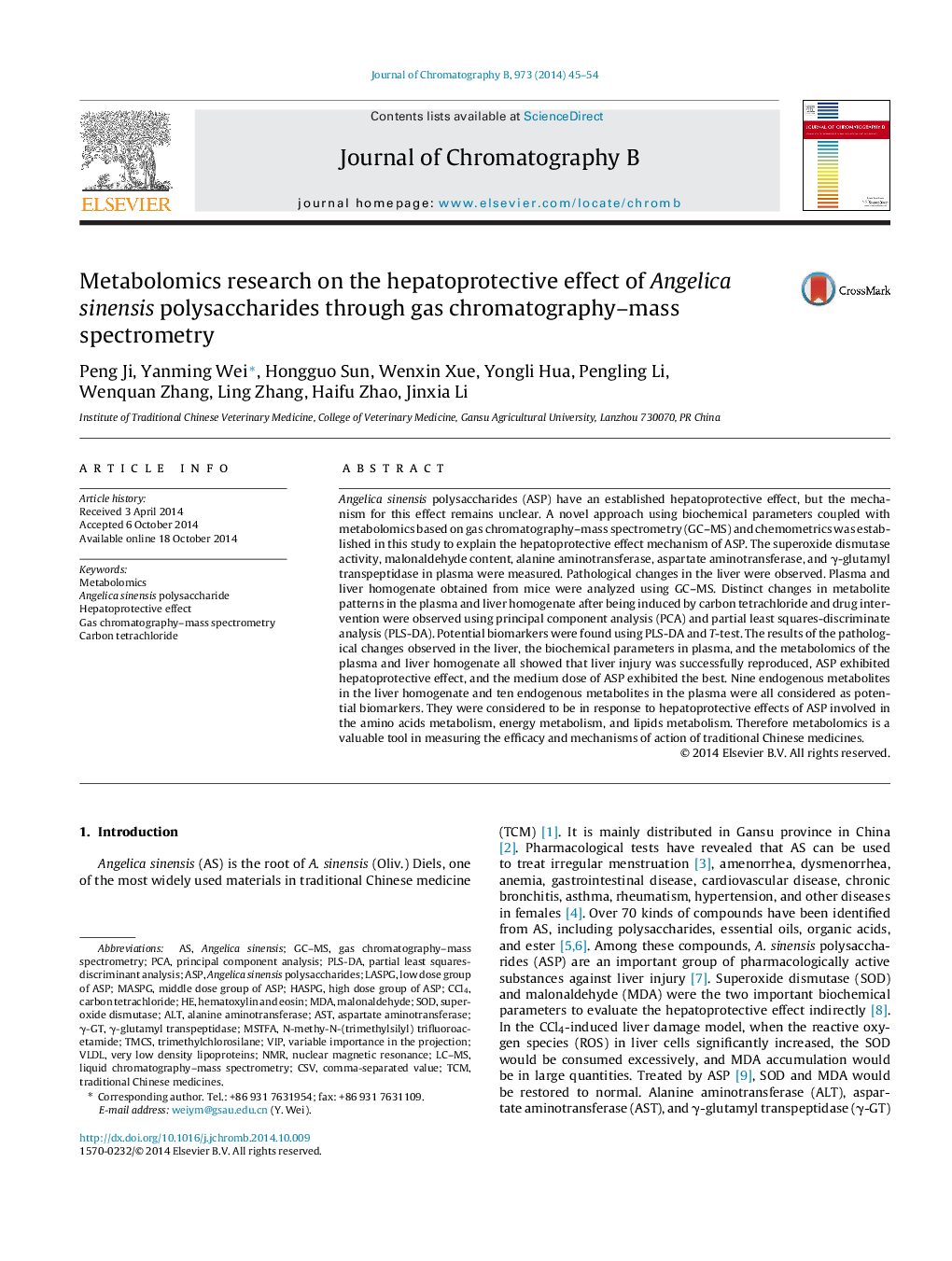| Article ID | Journal | Published Year | Pages | File Type |
|---|---|---|---|---|
| 7617467 | Journal of Chromatography B | 2014 | 10 Pages |
Abstract
Angelica sinensis polysaccharides (ASP) have an established hepatoprotective effect, but the mechanism for this effect remains unclear. A novel approach using biochemical parameters coupled with metabolomics based on gas chromatography-mass spectrometry (GC-MS) and chemometrics was established in this study to explain the hepatoprotective effect mechanism of ASP. The superoxide dismutase activity, malonaldehyde content, alanine aminotransferase, aspartate aminotransferase, and γ-glutamyl transpeptidase in plasma were measured. Pathological changes in the liver were observed. Plasma and liver homogenate obtained from mice were analyzed using GC-MS. Distinct changes in metabolite patterns in the plasma and liver homogenate after being induced by carbon tetrachloride and drug intervention were observed using principal component analysis (PCA) and partial least squares-discriminate analysis (PLS-DA). Potential biomarkers were found using PLS-DA and T-test. The results of the pathological changes observed in the liver, the biochemical parameters in plasma, and the metabolomics of the plasma and liver homogenate all showed that liver injury was successfully reproduced, ASP exhibited hepatoprotective effect, and the medium dose of ASP exhibited the best. Nine endogenous metabolites in the liver homogenate and ten endogenous metabolites in the plasma were all considered as potential biomarkers. They were considered to be in response to hepatoprotective effects of ASP involved in the amino acids metabolism, energy metabolism, and lipids metabolism. Therefore metabolomics is a valuable tool in measuring the efficacy and mechanisms of action of traditional Chinese medicines.
Keywords
Angelica sinensisγ-GTTCMVIPASPCCl4ALTVLDLPLS-DACSVAngelica sinensis polysaccharidesTMCsMSTFAMDAnuclear magnetic resonanceGC–MSLC–MSPCAγ-glutamyl transpeptidaseASTAspartate aminotransferaseAlanine aminotransferaseHepatoprotective effectVariable importance in the projectionpartial least squares-discriminant analysisPrincipal component analysisTrimethylchlorosilaneNMRtraditional Chinese medicinesSODSuperoxide dismutaseliquid chromatography–mass spectrometrygas chromatography–mass spectrometryvery low density lipoproteinsmalonaldehydeMetabolomicsHematoxylin and EosinCarbon tetrachlorideAngelica sinensis polysaccharide
Related Topics
Physical Sciences and Engineering
Chemistry
Analytical Chemistry
Authors
Peng Ji, Yanming Wei, Hongguo Sun, Wenxin Xue, Yongli Hua, Pengling Li, Wenquan Zhang, Ling Zhang, Haifu Zhao, Jinxia Li,
